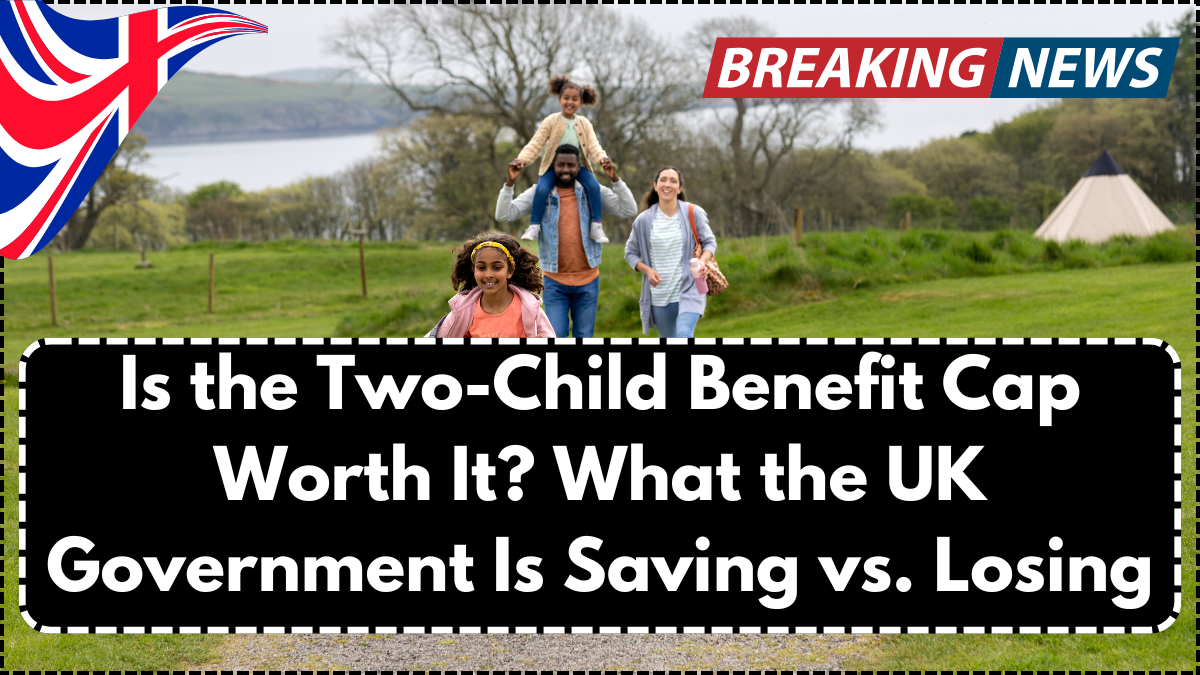As of May 2025, the UK’s two-child benefit cap remains one of the most debated elements of its welfare policy. Introduced in 2017, the cap limits Child Tax Credit and Universal Credit support to the first two children in most households. The intent was straightforward: reduce public spending. But eight years on, the critical question still stands—is the two-child benefit cap saving the government money, and if so, at what societal cost?
A policy analysis reveals that while the Department for Work and Pensions (DWP) has trimmed direct spending, the broader economic effects tell a more complicated story. For example, a 2023 House of Commons briefing estimated the annual savings from the cap at roughly £1.3 billion. However, new 2025 figures suggest that indirect costs—like increased demand on housing, NHS services, and schools—may be offsetting some of these savings.

What the Government Is Saving vs. What It’s Losing
Here’s a look at the financial trade-off:
Aspect | Estimated Annual Saving (£) | Estimated Indirect Costs (£) | Net Effect |
|---|---|---|---|
Child Tax Credit/UC Reduction | 1.3 billion | – | +1.3 billion |
Increased Housing Demand | – | 250 million | -250 million |
NHS & Mental Health Services | – | 400 million | -400 million |
School & Social Services | – | 300 million | -300 million |
Estimated Net Savings | £350 million |
While the policy technically contributes to a reduced DWP budget, the net annual savings, estimated at around £350 million, appear modest when compared to the strain placed on families and public services.
Social Impact: Rising Child Poverty and Stalled Upward Mobility
Critics argue that the policy has disproportionately affected larger families, often pushing children into poverty. In 2025, more than 1.5 million children are estimated to be living in households affected by the cap. According to the Child Poverty Action Group, affected families are losing up to £3,235 per year. This loss is significant enough to impact children’s nutrition, education, and overall well-being.
Furthermore, research indicates that the cap discourages employment among second earners, often women, due to reduced financial incentives. These factors may hinder long-term economic productivity, undermining the intended benefit of savings to the DWP budget.
Policy Analysis: Public Sentiment and Political Pressure in 2025
Public opinion has shifted noticeably since the policy’s introduction. In a recent Ipsos survey conducted in March 2025, 61% of respondents believed the cap should be repealed or revised. This growing dissatisfaction is influencing political agendas across party lines. While the current government continues to defend the cap as fiscally necessary, opposition parties are framing it as a short-sighted move with deep societal costs.
This has prompted some MPs to call for a more comprehensive policy analysis that includes not only short-term savings but also long-term socioeconomic implications. Think tanks like the Institute for Fiscal Studies have also suggested revisiting the cap, especially in light of increasing economic inequality.
Future Outlook: Is Reform on the Horizon?
As we head into the second half of 2025, the government faces mounting pressure to reconsider its approach. Proposed alternatives include:
- Means-tested exceptions for low-income working families.
- Gradual phasing out instead of an abrupt cap.
- Increased support for childcare to encourage employment.
Whether these ideas will be implemented remains uncertain. However, the data suggests that while the cap is reducing immediate costs, it may not be a sustainable long-term strategy.
FAQ
Why was the two-child benefit cap introduced?
It was introduced in 2017 to reduce welfare expenditure and encourage responsible family planning.
How much does the UK government save from the cap annually?
Current estimates for 2025 suggest around £1.3 billion in direct savings, though the net benefit after indirect costs is closer to £350 million.
Who is most affected by the policy?
Larger families, particularly those on low incomes and single-parent households, are most impacted.
Are there exceptions to the two-child limit?
Yes, exceptions exist for multiple births, adoption, and some kinship care situations.
Is there political support for repealing the cap in 2025?
Public and cross-party support for revising or repealing the policy is growing due to its social impact.
Click here to learn more